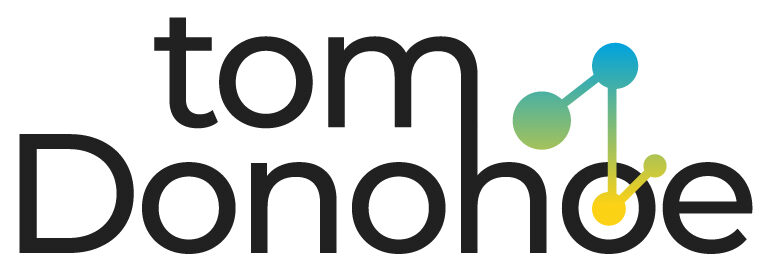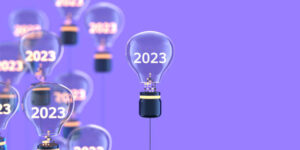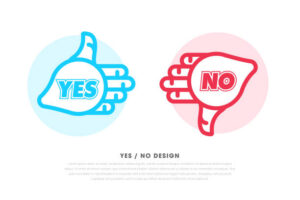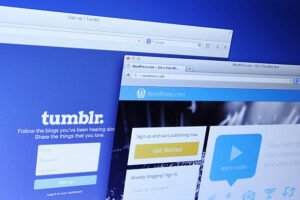How to Prepare Students for the Jobs of the Future

The world of work is changing. According to the World Economic Forum, 65% of children entering primary school today will be employed in jobs that do not yet exist.
At the same time, many jobs that exist today will become automated by artificial intelligence in the future. McKinsey Global predicts that almost half of all workplace activities could be automated in the future.
So how can educators prepare students for jobs that don’t yet exist rather than equipping them with skills that may soon be obsolete?
This may seem like an impossible task to add to an already overworked and, too often, under-resourced teaching staff.
However, with strategic planning, educational institutes can ensure that their faculty, staff, and students are able to adapt to whatever comes next, as well as whatever comes after that.
Focus on soft-skills
Complex problem-solving is set to be the most important job skill in 2020. In fact, most of the predicted crucial skills cited are those developed through social and emotional learning.
Encouraging students to self-direct and take responsibility for their learning through individual study and collaboration can help them develop these key skills. In addition, encouraging lateral thinking and self-direction helps students become adept problem-solvers.
While subject curricula might limit how much leeway some educators have at present, by approaching subjects from a different or unexpected angle, educators can allow students to develop new skills.
Some elementary and high schools in Canada and around the world are piloting “Genius Hour” projects where students are encouraged to work on topics that interest them from one hour every week up to as much as 20% of their school day.
The program emulates the way tech companies, such as Google, encourage employees to work on areas that interest them outside of their usual workload but within their working hours. Students are supported to develop new approaches and ideas on their own, which gives them ownership and responsibility for their learning.
The program culminates with students showcasing their projects to their peers and the wider school community. Programs like this help develop entrepreneurial skills, find solutions to problems themselves, and study areas of interest to them in more depth.
Perhaps as important to teachers, it also fosters the natural love of learning that children are born with but that, sadly, education can sometimes tend to undermine.
Humanities will remain relevant.
There’s a joke beloved by humanities academics that goes, “science can tell you how to clone a tyrannosaurus rex, humanities can tell you why this might be a bad idea.” Despite the long-standing playful rivalry between the two disciplines, arts and humanities subjects still have a place alongside STEM subjects.
No matter how tech-driven and AI-supported future workplaces are, there will be a place for independent thinkers, creators, and arts and humanities practitioners.
In fact, they may be in more demand than ever. Google’s former Director of Engineering, Damon Horowitz, has a Ph.D. in Philosophy and had a second job title of “in-house philosopher” while at Google.
While encouraging students to learn to code and understand statistics and algorithms will mean that they can be programmers, without an understanding of the impact of their decisions on society at large, they could result in unforeseen negative consequences.
Even if (or when) the future workplace is operated by artificial intelligence and machines, those machines will be programmed by humans. Without developing critical thinking skills to assess the impacts of AI’s actions on the world around them, unintended negative consequences could occur.
Already, technology innovators are realizing that the same unconscious biases that humans have are being built into some technologies, such as automated image recognition.
Encourage teachers to be innovators.
After parents, teachers are usually the most influential adults in children’s lives. Teachers starting their careers this year could well still be teaching and influencing children until 2050.
Anne Looney, Dean of Education at Dublin City University (DCU), argues that newly qualified teachers shouldn’t go from being students to teaching without much experience in workplaces outside of educational facilities.
For this reason, DCU has developed a program that sees student teachers gaining experience in organizations such as non-profits, technology companies, and the private sector in the summer before they begin their first teaching jobs.
The idea is to create more rounded, creative educators by exposing them to different experiences. Although in the early stages, the results have been “extremely positive,” and other institutes will likely develop similar programs which will, as Looney puts it, train teachers to be “innovators, adventurers and seekers.”
Encourage digital literacy
Today’s students are digital natives and, in some cases, are more comfortable adapting to new technologies than their teachers.
Across continents and industries, digital skills are required in the majority of roles, and companies want to hire graduates who know of digital technologies and platforms. However, despite the ubiquity of smartphones, not all students will have access to technology outside of the classroom.
Students need to be supported to develop skills in relation to their use of digital tools, to differentiate between reliable internet sources, to assess risks in sharing information online, and to create what one educator calls “strong digital citizenship.”
Many of the tools to encourage digital literacy could be incorporated into existing lesson plans or as part of Genius Hour projects. Digital literacy skills can also be paired with developing soft skills such as critical thinking and numeracy skills.
Use new and emerging technologies.
Educational resources to support teaching digital literacy and using technology are available from many technology and internet companies, including Microsoft and Google. Under-resourced schools may be able to access sponsorship to fund access to technology through some organizations’ corporate social responsibility schemes.
Microsoft’s DreamSpace initiative gives primary and secondary students hands-on experience with technology and interactive learning tools such as virtual reality. It encourages them to imagine what the world will be like in the future.
Interestingly, and not coincidentally, it aims to develop creativity and problem-solving – the soft skills that will be in demand in the future workforce. Students should be given the chance to see how technology can be applied to the “real” world and what impacts it could have.
For example, Tess Posner, Executive Director of AI4All, advises keeping the focus on human and social problems and how technology and AI can impact them. She believes students should be asked to consider the impacts future developments, such as self-driving cars, will have on an aging population.
Posing these kinds of questions will allow students to see technology as part of daily life in the future.
Develop Resilience
A long time ago, in classrooms, the emphasis was on the “three Rs – reading, writing and arithmetic.”
Nowadays, another R is seen as a crucial element in educating young people – developing resilience. Equipping students with a resilient attitude will mean they react to change with a growth mindset; rather than fearing the changes, they will have the confidence to adapt to new situations.
According to Michael Chui, Partner, McKinsey Global Institute, “prepare today’s young people for a world of constant uncertainty.” Part of developing resilience is having a positive attitude towards failure, something that goes against more traditional models of exam-based education.
Thankfully, educators, today have moved on from focusing on getting the answer right for the first time to giving more support to consider how students come up with solutions and what questions they ask to get there. In the world of venture capitalism, entrepreneurs with past failures are viewed positively as having gained learning experiences.
While death and taxes used to be the only certainties in life, uncertainty should probably be added to the list today. Students and staff who are resilient and adaptable will have advantages over their less resilient peers.





